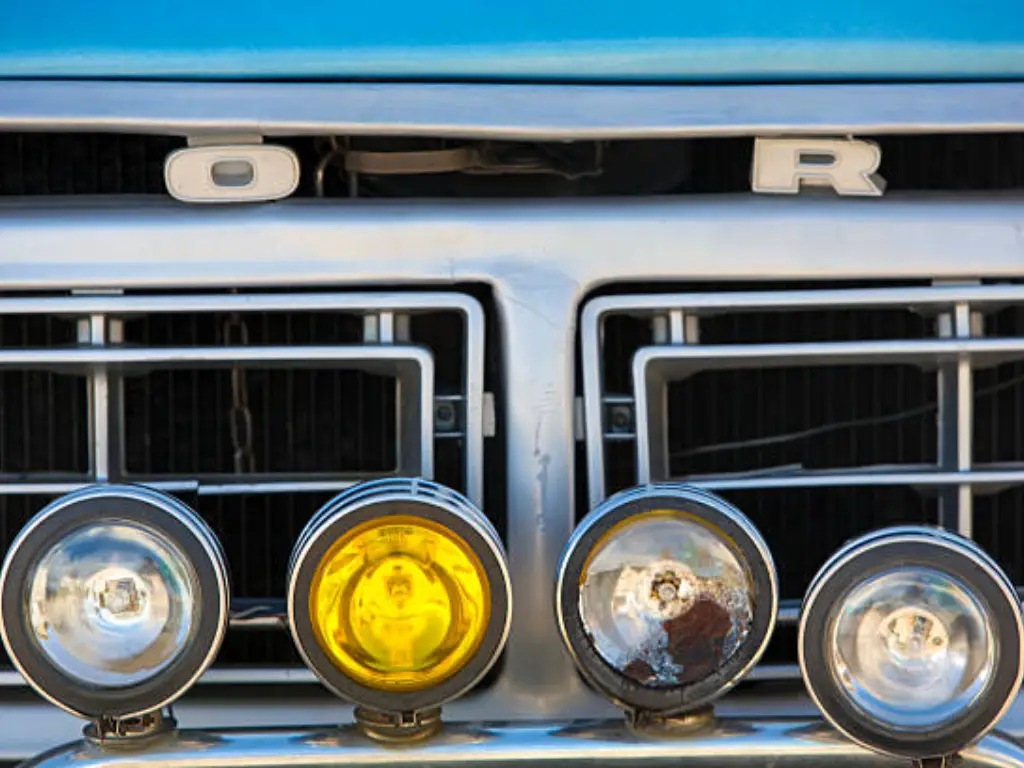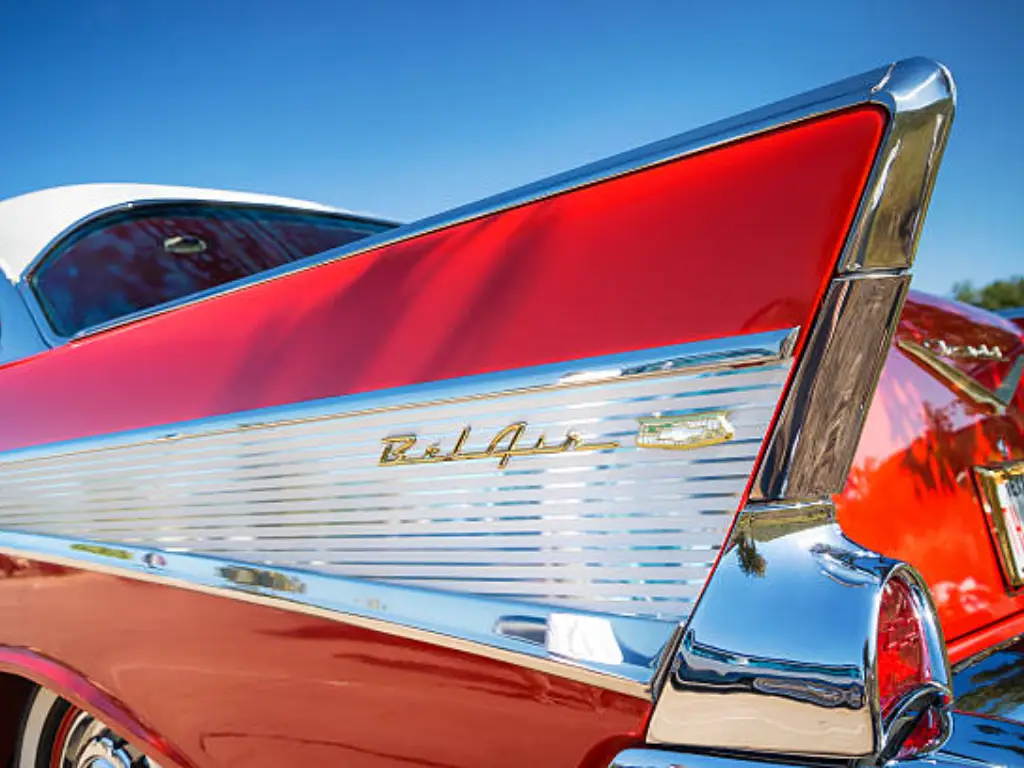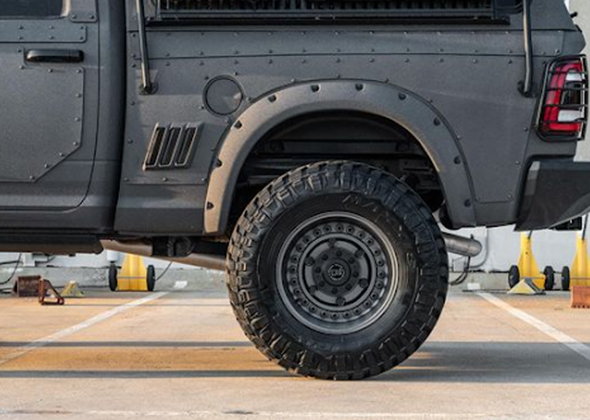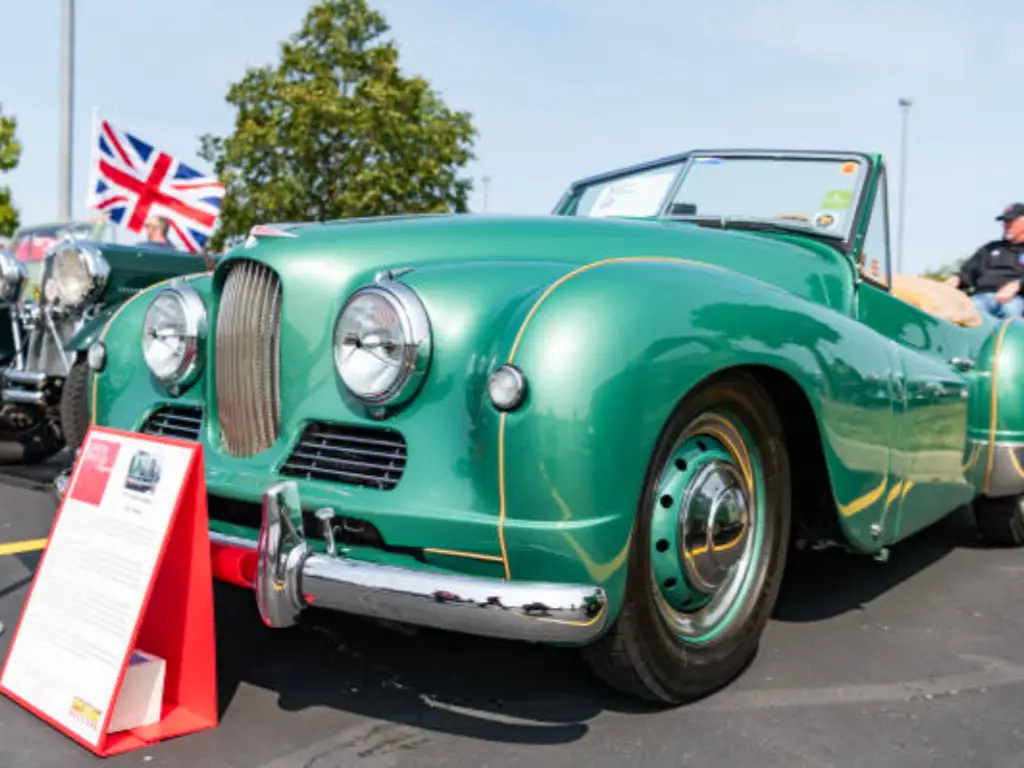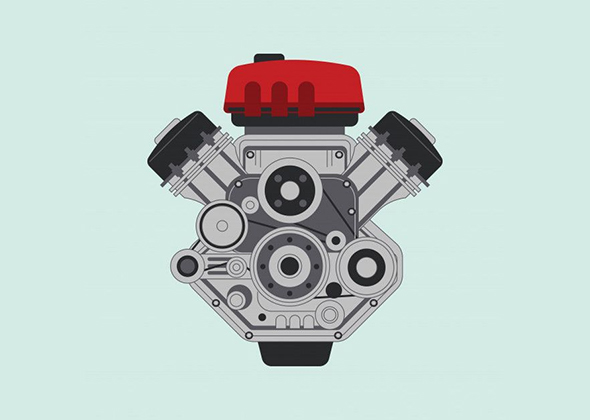
Introduction
Imagine this: you are on a lovely drive, maybe on a seashore highway or on a mountain pass, when an opaque curtain of gray falls down on you. The visibility is significantly reduced up to just a few metres, and the familiar road ahead is replaced by an unknown and undefined space. During such times, when the visibility is really bad, i.e., when there is a real fog, the use of fog lights on your car becomes more of a necessity than a luxury. However, to a large number of drivers, the precise position and correct utilization of these lights is a little enigma.
This guide is applicable to anyone who is either driving a new car with an elaborate digital dashboard or is in the care of an old classic. We shall de-mystify all the things about your fog lights and give you a step-by-step, universal guide on how to operate them. We shall discuss what they are, the vital rules of when and at the right times they should be on, and what to do in case they do not go on. As a classic car lover, we will also discuss the discreet aspects of the vintage systems that will have you make it through any kind of weather with ease and fashion.
First, Understand Your Tools: What Are Fog Lights Really For?
It is necessary to know that we are dealing with special tools, not with additional headlights, before we touch any switches. They are designed and functional, unlike your typical low and high beams. According to a 2019 study published in the Society of Automotive Engineers (SAE), the performance of vehicle lighting during adverse weather is decisively determined by beam pattern and mounting height. This is exactly the point of the great use of the fog lights, and when it is also vital to learn of the legal requirements of their use in certain areas. The law may require drivers to use them under certain visibility conditions on the assumption that they will be used correctly.
- Low Mounting Position: Fog lights are installed at a low position on the front bumper of the vehicle, usually underneath the main headlights. The fog seldom rests on the ground; it normally hangs one or two feet above the road. This low angle enables the light beam to pass under the thickest part of the mist and light up the pavement that is facing you.
- Wide, Flat Beam: Mog lights have a very wide, flat, and short-range beam, unlike the longer and narrower beam of your headlights. This is intentional. It is not aimed at observing hundreds of feet on the road, which cannot be observed at all in thick fog. Rather, the broad beam projects the edges of the roadway, the line of lanes, and other possible obstacles near your vehicle, and this gives the much-needed sense of orientation and reaction time, particularly when used at the correct moment rather than the wrong time.
When you are in fog, it is not only useless to use your high beams, but also risky. The light beam is directed at an elevated angle into the suspended water droplets of the fog, resulting in enormous reflection and glare, an effect commonly referred to as backscatter. This forms a blinding wall of white light, which renders your visibility even less than before. Turning on fog lights during an inappropriate moment, such as during sunny weather, may also blind other road users and go against the law of the day. Fog lights are the only device that was designed to slice through the darkness, rather than struggle with it.
The Golden Rules: When You Absolutely SHOULD Use Your Fog Lights
There is only one reason that you should turn your fog lights on, and that is the fact that the visibility is severely impaired. Although the local rules might differ a bit, the universally recognized standard, suggested by the transportation safety agencies, such as the U.S. National Highway Traffic Safety Administration (NHTSA), is at a location where visibility reaches less than 100 meters (or approximately 330 feet).
To put that in perspective, 330 feet is roughly the length of a football pitch. You can not quite see that far when you need to turn on your fog lights.
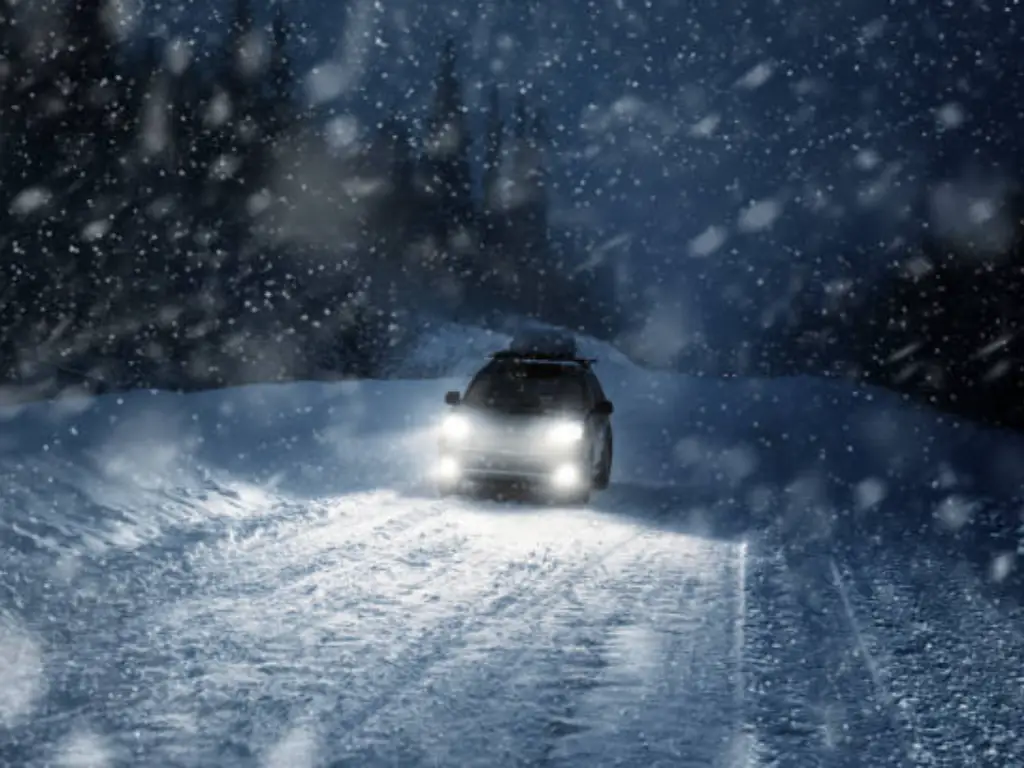
Apply them in the following situations:
- Thick Mist: That is their main aim.
- Heavy Rain or Sleet: During a downpour where the wipers do not keep pace and road spray provides an obscure veil, road lights may assist in delimiting the road.
- Heavy Snow: When there has been a blizzard or a heavy snowfall, the fog lights enable you to see the road directly ahead of you without their disorienting backscatter that would occur with high beams.
- Dust or Sand Storms: These are so detrimental to visibility as the fog, and in dry areas, it is important to have the safety feature of fog lights.
In all instances, they must be supplemented with your regular low beam headlights, never kept on unnecessarily–the object is always light and etiquette.
Safety First: When Using Fog Lights Is Wrong and Dangerous
It is also important to know when not to use your fog lights as it is to know when to use them. Misuse of them may be distracting and even dangerous to other drivers.
- In Clear Conditions (Day or Night): The long, low beam of fog lights has the ability to cause unwarranted volume to the incoming traffic, particularly at night. When visibility is good, there is no advantage to using them.
- During Light Rain or Mist: When the normal low-beam light is offering sufficient visibility, there is no need to add fog lights, and it is a distraction to others.
- When Following Another Vehicle Closely: It is especially so with rear fog lights. Rear fog lights are usually one, very intense, red light, usually 21-watt powerful (similar to brake-light) in intensity. It may seem to the guy behind you that you are braking all the time, and it will leave him confused and straining his eyes. Only under identical situations of less than 100-meter visibility should it be applied so that your vehicle can be spotted behind.
Poor use is not only bad etiquette but, in most states and countries, it is a traffic offense and could cost one a fine. It is a simple rule of thumb; if you do not need them off, switch them.
A Universal Guide to Finding the Switch
Although each car is unique, there are three main areas where the controls of the fog lights may be found, and they are always identified by a certain international symbol.
On Modern Cars: The 3 Common Spots
- The Turn Signal Stalk: This is commonly installed on many European and some Asian and American cars, where the fog light control is part of the larger lighting stalk (the one that controls the turn signals and headlights). It may also be a distinct rotating collar, ring on the stalk, or steering wheel stalk.
- A Dashboard Button: This is a quite common place, a single-purpose push-button on the dashboard, often to the left of the steering wheel next to the dimmer and trunk release button.
- The Infotainment Screen: The replacement of physical buttons with digital control is happening in the newest models of cars, especially EV models such as Tesla or Volvo, and Mercedes-Benz. The option of the fog light will probably be located in the menu of Lights or Vehicle Settings on the central touchscreen.
Decoding the Symbols: Front vs. Rear Fog Lights
Manufacturers adopt standardized symbols in order to avoid confusion. It is important to know what they mean so as to activate the right light.
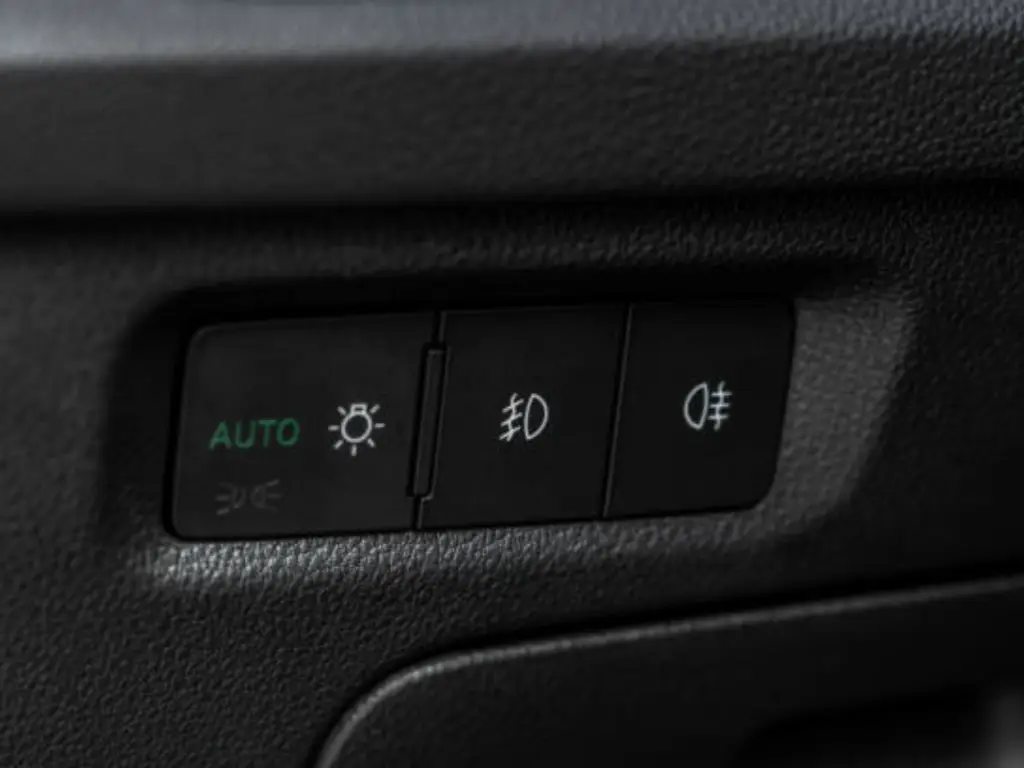
| Light Type | Description |
| Front Fog Light | A lamp symbol with light rays pointing downwards, crossed by a wavy vertical line representing fog. |
| Rear Fog Light | A lamp symbol with light rays pointing straight horizontally, crossed by a wavy vertical line. |
Step-by-Step: How to Turn On Fog Lights on a Modern Car
- Precondition: Switch on Your Headlights. You will not be able to switch on the fog lights on virtually every vehicle unless your parking lights or low-beam headlights are on. Firstly, you should switch on your main light switch to the right mode.
- Locate the Switch. The front fog light switch symbol is found in three places that are common places (the stalk, dashboard, or screen).
- Activate the Control. It will be an overturn of the collar, a press on the button, or a stroke on the screen icon.
- Confirm Activation. There will be a corresponding indicator light of an equal symbol of the fog light that will turn on in your instrument cluster. This is to ensure that your fog lights have been turned on. When you see this light, then you have your fog lights on.
A Nod to the Past: Operating Fog Lights on a Classic Car
To the owner of the classic car, it is sometimes a little less digital and more physical. When you are riding a vintage model car of the 1990s and earlier, you will not be using touchscreens. Rather, you would probably come across a special standalone switch. Search below the dashboard in the lower part; there may be a pull-knob, a metal toggle switch, or a rocker switch, and sometimes no illuminated mark on the instrument panel. One of the beauties of these cars is their individual nature; however, it is at the same time their lack of standardization. Moglights on a Chevrolet of the 1970s can work entirely differently on a vintage Volkswagen or a Ford of the same year.
Several iconic classic cars to illustrate this diversity:
| Classic Car Model (Example Years) | Switch Type & Style | Typical Location & Operation |
| MGB (1962-1980) | Metal Toggle Switch | On the center console, one of a series of the same switches is used for other functions, such as the heater fan. Needs a mere flip up or down. |
| Classic Porsche 911 (1964-1989) | Pull-Knob Switch | Located on the dashboard, left of the steering wheel. One turns the knob to turn on the headlights and pulls out one or two stops to switch on the fog lights. |
| Ford Mustang GT (1965-1966) | Rocker or Toggle Switch | An independent switch is usually mounted on the lower dash, independent of the main headlight switch, to operate the fog lights on the grille of the GT package. |
| Mercedes-Benz W123 (1976-1985) | Integrated Pull-Knob | The role has been incorporated into the primary rotary headlight dial at the left side of the dash. Once the dial has been rotated to enable the use of the Headlights, its whole knob is pulled out to enable the use of the Mog lights. |
Beyond Operation: Why Quality Matters for Classic Car Fog Lights
Maintaining a vintage car on the road is an act of love, preserving a car’s history. However, at a certain point, such aspects of the lighting will be considered safety features, but authenticity should not be sacrificed to performance. Older fog lights (mid-20th century) tend to have faded lenses, corroded internal reflectors, and old wiring, and provide low-intensity light that just does not fulfill current safety requirements. Locating new-old-stock parts is an issue and a rarity, and when they are available, they are also in poor condition.
It is here that real experts can help. We are Sunway Autoparts, and we have been committed to the sphere of classic auto parts since 2007. We know that in the case of owners of classic Ford vehicles, Volkswagen, and Chevrolet, the principle is to make the car safer, but not to affect its soul. That is what makes us not only sell parts, but solutions. Our accuracy of production is that we develop replica parts that are so similar in the specifications of an original equipment (OEM) part that they fit and look exactly as they would have done in the period. However, we also produce them using much better current materials and resort to really careful chrome plating. The outcome is a fog light that looks and feels like an old vintage but works as reliably and brightly as you need it to, which is really important because it solves the serious issue of well-worn, hard-to-find original parts. It is the ideal combination of historical integrity and peace of mind nowadays.
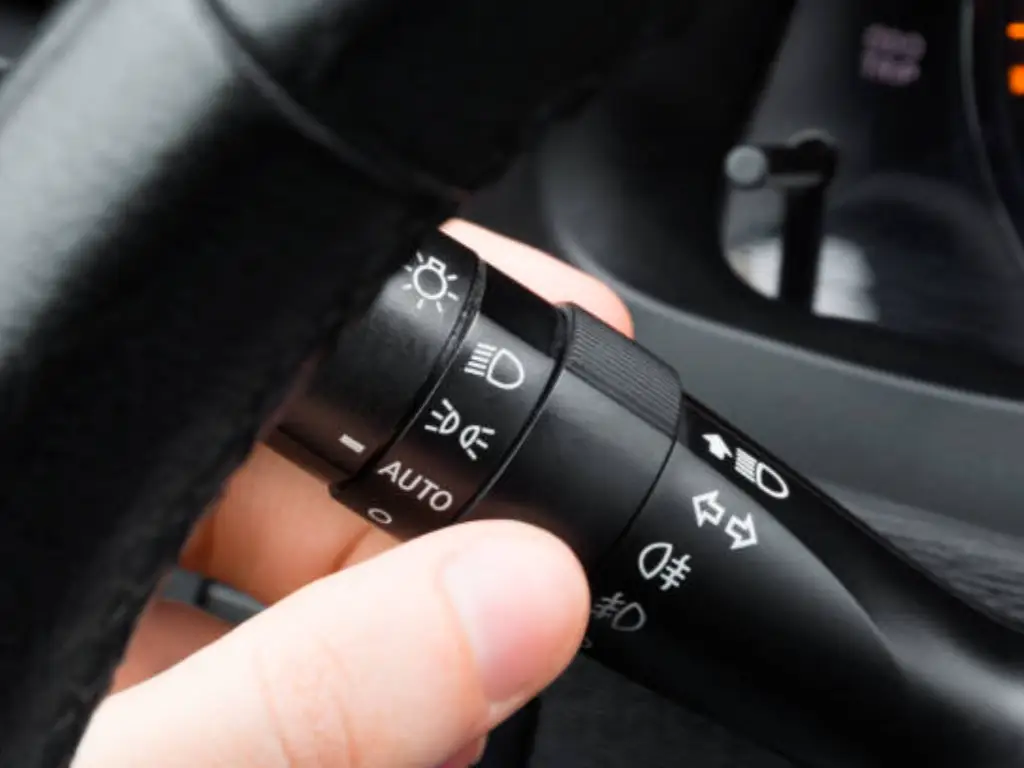
Quick Troubleshooting: What If Your Fog Lights Don’t Work?
If you’ve followed the steps and your fog lights still won’t turn on, don’t panic. The issue is often a simple one. Here’s a quick diagnostic checklist to follow.
| Symptom | Possible Cause | How to Check / Solution |
| Neither fog light works. | Blown Fuse | This is the most common culprit. Check your vehicle’s fuse box (locations are in your owner’s manual) for the fuse dedicated to the fog lights. Visually inspect it to see if the metal strip inside is broken. If so, replace it with a new fuse of the exact same amperage. |
| Neither fog light works. | Faulty Relay | The fog light circuit uses a relay. You can often test it by swapping it with an identical relay from a non-critical circuit (like the horn) to see if the lights then work. If they do, the original relay is faulty. |
| Only one fog light works. | Burnt-Out Bulb | Like any light bulb, fog light bulbs have a finite lifespan. If one is out, it’s almost certainly the bulb itself. This is a straightforward replacement on most vehicles. |
| Lights flicker or work intermittently. | Loose Wiring / Bad Connection | The wiring connectors near the fog light housing can become loose or corroded over time. Check to ensure they are securely connected and free of corrosion. A bad ground wire can also cause this issue. |
Conclusion
The fog lights of your car are a strong yet narrow security feature. By knowing the real meaning of their purpose, you could safely cut through the worst of foggy conditions. It has its golden rules to remember; when visibility is so bad (beneath 100 meters), keep the use to a time when you are in tandem with your low beams, and then be polite by turning them off at the appropriate moment. Be it with the high-tech menus of a modern car or the pleasurable clacking of a toggle switch in an old classic, you are now in a position to do this right.
Driving is a matter of confidence, and being ready for any situation is what the confidence will be based on. To our fellow classic car owners, who have invested such time and money in maintaining and enjoying these moving artworks, it is all about making sure that not only is each part beautiful, but also useful. In case you need to reclaim that luster, go to the area of our line of period-appropriate lighting available in Sunway Autoparts to finish the trip. Drive safely.

